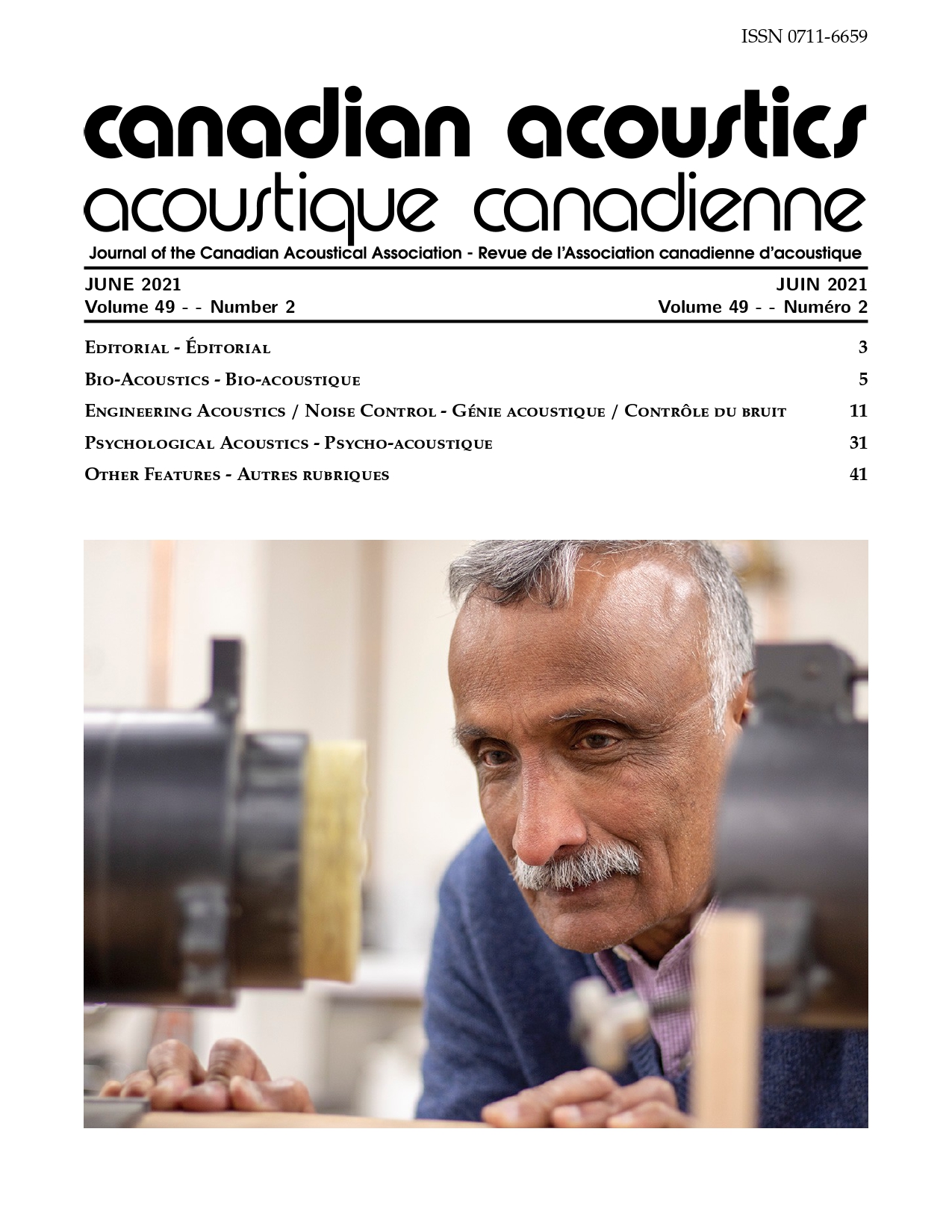Screening For Dichotic Acoustic Context And Headphones In Online Crowdsourced Hearing Studies
Keywords:
dichotic, headphones, screening, crowdsource, online studyAbstract
Experimental evidence suggests that crowdsourced online experiments, where suitable, may produce better data than in-lab studies. The absence of a reliable screening method for headphones and dichotic auditory context (perfect separation of the stereo channels) is one of the main reasons why online crowdsourcing is rarely possible for auditory studies. As the evidence demonstrates, the responses to the questions “Are you wearing headphones” and “Are the headphones stereo channels separated” are providing unreliable and even conflicting results. Here we show that the interference beating phenomenon can be used as a screening method for dichotic context with satisfactory accuracy. We collected data through an in-lab experiment to test the method’s performance against the reference (the truth), avoiding the uncontrolled biases of the online experiments, achieving Cohen’s Kappa of 0.79 (95% CI, [0.52, 1.06], p<0.001), yielding “Substantial agreement” when calculated over the whole sample, and Cohen’s Kappa of 1 (95% CI, [1, 1], p=0.001), yielding “Almost perfect agreement” when calculated only over the true dichotic cases. Also, we collected data by using the only other method found in the literature that attempts screening for headphones usage, to compare both methods over the same participants and auditory contexts. The usage of the new method is tested in a crowdsourced setting, involving over 2000 online participants. The in-lab and online results suggest that the method introduced in this study is suitable, and therefore, an enabler of auditory online crowdsourced studies.
Additional Files
Published
How to Cite
Issue
Section
License
Author Licensing Addendum
This Licensing Addendum ("Addendum") is entered into between the undersigned Author(s) and Canadian Acoustics journal published by the Canadian Acoustical Association (hereinafter referred to as the "Publisher"). The Author(s) and the Publisher agree as follows:
-
Retained Rights: The Author(s) retain(s) the following rights:
- The right to reproduce, distribute, and publicly display the Work on the Author's personal website or the website of the Author's institution.
- The right to use the Work in the Author's teaching activities and presentations.
- The right to include the Work in a compilation for the Author's personal use, not for sale.
-
Grant of License: The Author(s) grant(s) to the Publisher a worldwide exclusive license to publish, reproduce, distribute, and display the Work in Canadian Acoustics and any other formats and media deemed appropriate by the Publisher.
-
Attribution: The Publisher agrees to include proper attribution to the Author(s) in all publications and reproductions of the Work.
-
No Conflict: This Addendum is intended to be in harmony with, and not in conflict with, the terms and conditions of the original agreement entered into between the Author(s) and the Publisher.
-
Copyright Clause: Copyright on articles is held by the Author(s). The corresponding Author has the right to grant on behalf of all Authors and does grant on behalf of all Authors, a worldwide exclusive license to the Publisher and its licensees in perpetuity, in all forms, formats, and media (whether known now or created in the future), including but not limited to the rights to publish, reproduce, distribute, display, store, translate, create adaptations, reprints, include within collections, and create summaries, extracts, and/or abstracts of the Contribution.


